If you are an older person from a Culturally and Linguistically Diverse (CALD) background, these resources will help you to understand your rights to quality safe aged care and how it is changing for the better.

If you are an older person from a Culturally and Linguistically Diverse (CALD) background, these resources will help you to understand your rights to quality safe aged care and how it is changing for the better.

If you are an older person from a Culturally and Linguistically Diverse (CALD) background, these resources will help you to understand your rights to quality safe aged care and how it is changing for the better.

If you are an older person from a Culturally and Linguistically Diverse (CALD) background, these resources will help you to understand your rights to quality safe aged care and how it is changing for the better.

Our Regulatory Strategy sets out how the Commission will deliver on our goals and commitments. This resource may refer to information that will be updated from 1 July 2025 to align with the new Aged Care Act and Quality Standards.
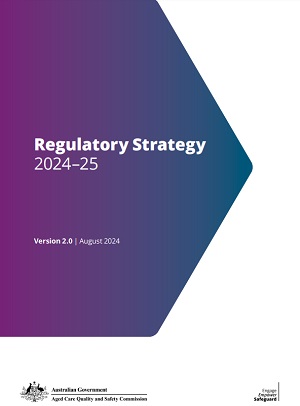
Use this checklist to ensure you allocate time, at least annually, to review the procedures you have in place to ensure you are meeting your provider governance obligations.
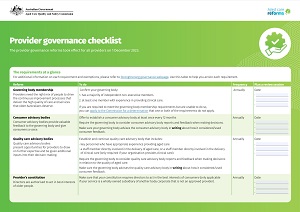
Use this discussion guide in consumer advisory body meetings to help start conversations and encourage ideas on important topics.

To Dip or Not to Dip (TDONTD) is a quality improvement intervention successfully implemented in UK and Australian aged care homes to improve UTI assessment and antibiotic prescribing appropriateness.
This implementation guide has been drawn from the experiences of homes and champions who have implemented TDONTD, along with feedback from aged care nurses and personal care assistants who have used TDONTD resources.

This quick survey is a reflection tool on urine dipstick practice in your facility.
Is there room for improvement?
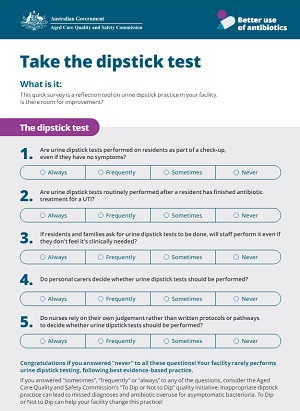
This huddle tool poster provides guidance on appropriate use of urine dipstick tests in older adults. It explains that asymptomatic bacteriuria (ASB) is common and not harmful, but that unnecessary antibiotic treatment can be. It suggests confirming urinary tract infections (UTIs) through clinical symptoms rather than dipstick results.
This resource may refer to information that will be updated from 1 July 2025 to align with the new Aged Care Act and Quality Standards.
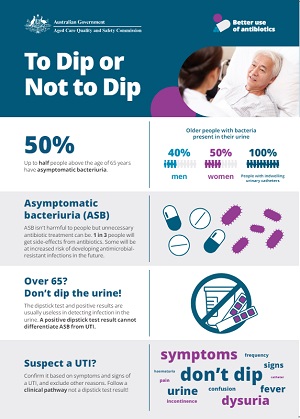
This visual abstract presents outcomes from a quality improvement project aimed at reducing low-value urine dipstick testing in aged care services. It included nurse education, implementing clinical pathways for UTI identification, and evaluating urinalysis practices and antibiotic prescribing. The findings demonstrate improved antibiotic prescribing appropriateness for UTIs over a 6-month follow-up period.
This resource may refer to information that will be updated from 1 July 2025 to align with the new Aged Care Act and Quality Standards.
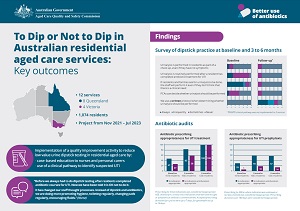
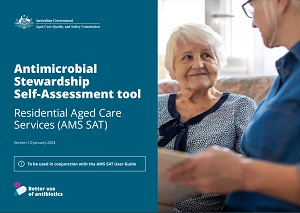
This workshop has been designed for home services providers and will help you to:
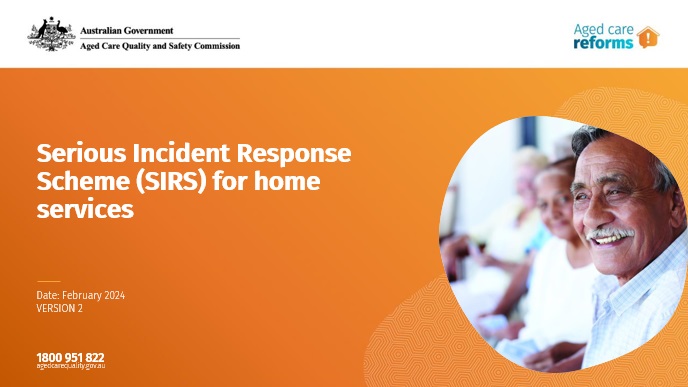
This fact sheet explains the benefits, processes and outcomes of home care pricing audits.
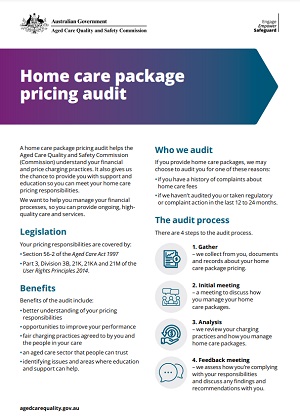
This Regulatory Bulletin explains what procedural fairness is.
It also explains the circumstances where the Aged Care Quality and Safety Commission must provide procedural fairness and our approach to providing procedural fairness when making decisions.

This fact sheet provides guidance for people who access home services through the Home Care Packages Program and what you can do if your provider wants to make changes to your home service arrangement.

Letter to general practitioners and nurse practitioners to seek support in a quality improvement intervention being undertaken in Australian residential aged care services (RACS), to address overprescribing of antibiotics for aged care residents for urinary tract conditions including asymptomatic bacteriuria.
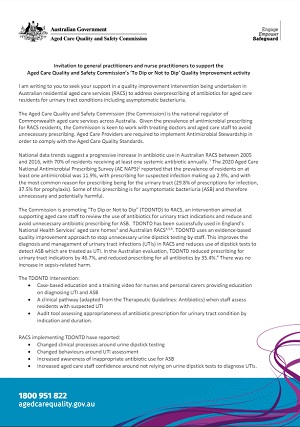
The Commission has developed the ‘Home Services Pricing and Agreements – Navigating changes the right way’ guidance for home service providers delivering care and service supports through the Home Care Packages (HCP) Program and Commonwealth Home Support Programme (CHSP).

Complete this form to provide the Commission with:
(a) any information required and not provided in a Priority 1 notice; and/or
(b) any further information specified by the Commissioner under subsection 95C(1) of the Aged Care Quality and Safety Commission Rules 2018.

Complete this form if the Commission requires you to give specified further information about a Priority 2 reportable incident under subsection 95C(2) of the Aged Care Quality and Safety Commission Rules 2018.









